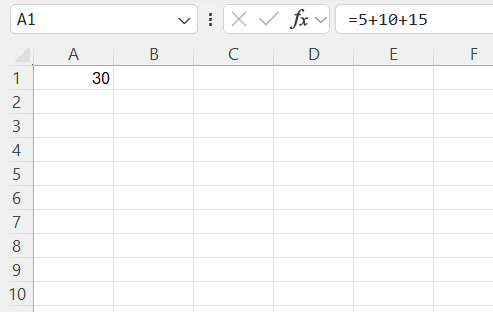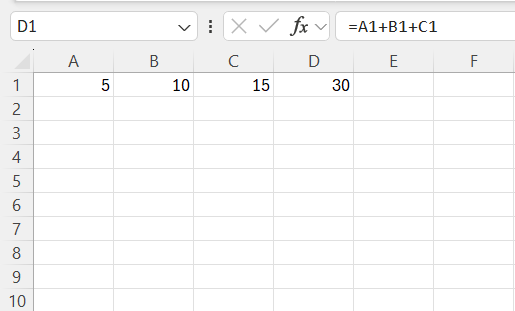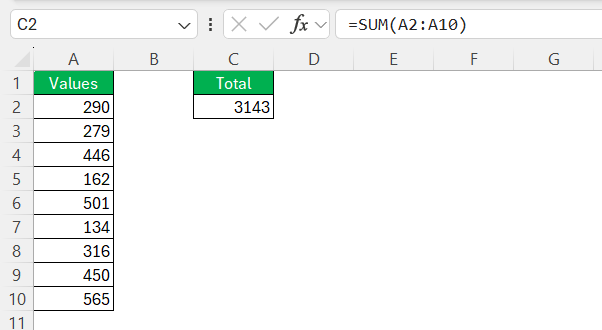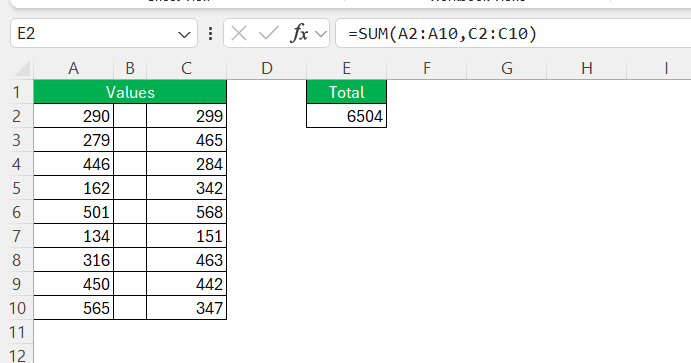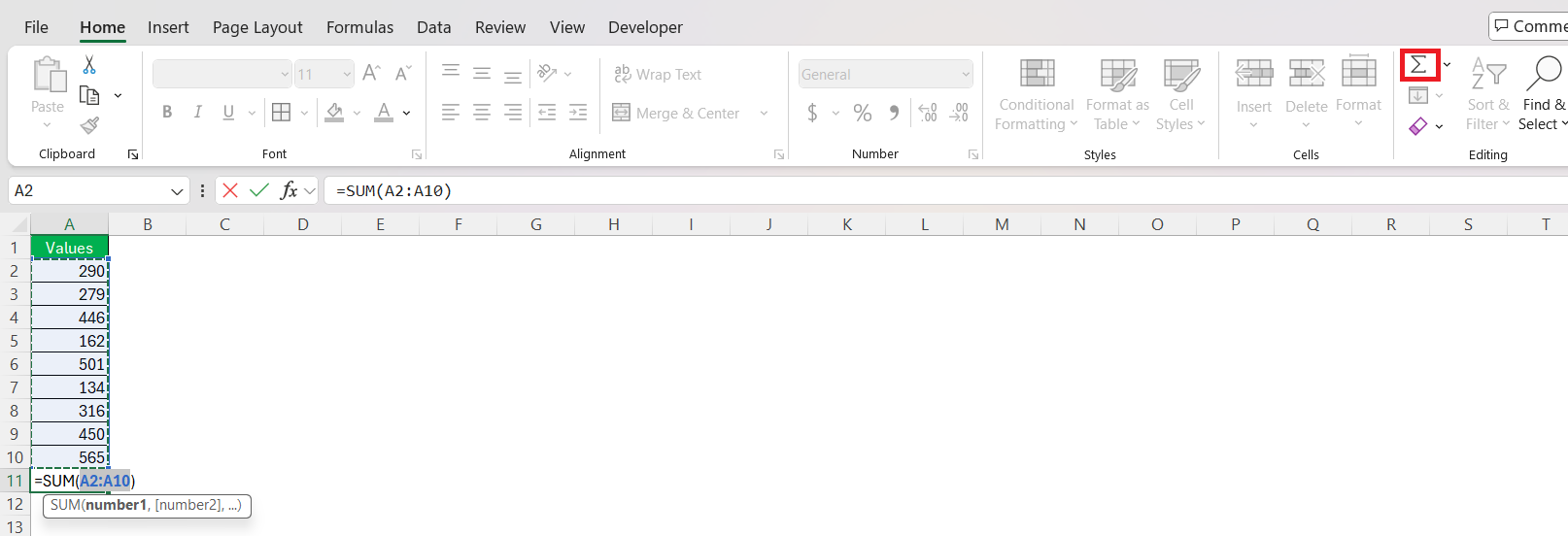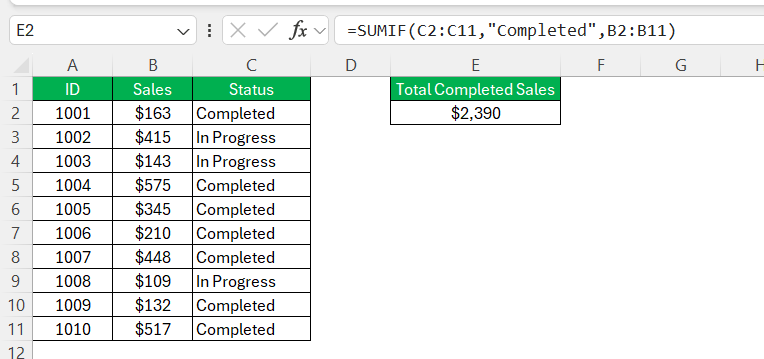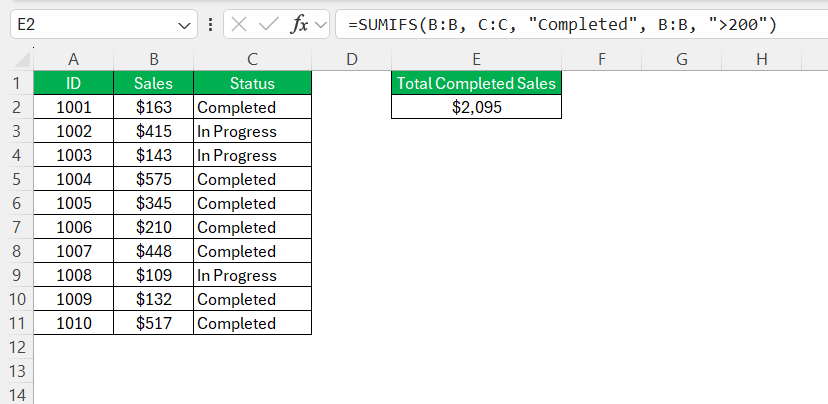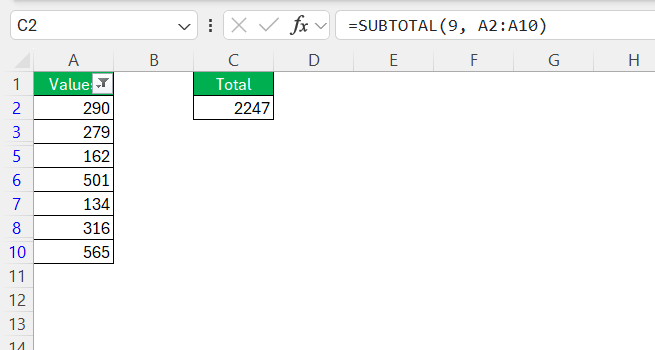Excel is a powerful tool for managing and analyzing data, and one of its most fundamental operations is addition. Whether you’re a novice user or an experienced pro, understanding how to add cells in Excel is essential for efficient data handling. This guide will walk you through the basics to advanced techniques, ensuring you can sum up data with confidence and precision.
Key Takeaways:
- Excel allows simple addition using the plus sign (+) for quick calculations.
- The SUM function is an essential tool for adding ranges of numbers efficiently.
- AutoSum speeds up summation by automatically selecting a range for calculation.
- SUMIF and SUMIFS enable conditional summation based on specific criteria.
- The SUBTOTAL function helps sum only visible data in filtered datasets.
Table of Contents
Getting Started with Adding Cells in Excel
Basic Addition Techniques
To get started with basic addition in Excel, you can use simple arithmetic operators or functions tailored for summation. For a quick calculation, employ the plus sign (+) to add values directly within a cell. For instance, entering the formula =5+10+15 in a cell will yield the total, 30.
If you’re dealing with cell references, you can set up a formula like =A1+B1+C1 to sum the values contained in those specific cells. This method is particularly useful when updating the data frequently.
How to Add Cells in Excel
Mastering the SUM Function
The SUM function in Excel is an indispensable tool for adding data efficiently and accurately. To master its use, begin by understanding its syntax: SUM(number1 , [number2],...). The function can handle a single range of cells or multiple, non-contiguous ranges. For example, using =SUM(A2:A10) adds all values from A2 through A10,.
While =SUM(A2:A10, C2:C10) computes the total from two separate ranges.
One of the key benefits of the SUM function is its ability to adapt as your data changes. When you add or remove entries within the referenced range, Excel automatically updates the total, ensuring your data analysis remains accurate without needing you to manually adjust formulas.
The SUM function also gracefully handles different types of data. It ignores empty cells, treating them as zero, and skips non-numeric text values entirely. This feature enhances its reliability across diverse datasets, reducing the risk of formula errors affecting your results.
AutoSum: Quick and Efficient
The AutoSum feature is an excellent tool for users looking to speed up their addition tasks without diving into detailed formula writing. Found on the Home tab, the AutoSum button is a shortcut that automates the process of creating a SUM formula. Simply select the cell where you want the cumulative total to appear, click “AutoSum,” and Excel intelligently selects the range it predicts you want to sum.
This feature is particularly beneficial when dealing with straightforward data sequences, as it efficiently calculates totals with a single click. If Excel doesn’t select the desired range correctly, you can easily adjust it by dragging the cursor over the precise cells you want to include before finalizing with Enter.
Moreover, AutoSum is versatile, functioning both vertically and horizontally, which is perfect for column or row-based data. Beyond just summing data, AutoSum can also be applied for quick calculations of average, count, max, or min with minimal effort. By leveraging AutoSum, users can greatly enhance their productivity, making it a quintessential tool for rapid data analysis and everyday Excel tasks.
Advanced Addition Methods
Using SUMIF and SUMIFS for Conditional Summation
For conditional summation, the SUMIF and SUMIFS functions in Excel provide specialized solutions. These functions are designed to sum values based on specific criteria, offering refined control over the data you analyze.
The SUMIF function is ideal when you need to sum values that meet a single criterion. Its structure is =SUMIF(range, criteria, [sum_range]). For instance, you could use =SUMIF(C:C, "completed", B:B) to add amounts in column B where column C indicates a status of “completed.” This function is straightforward and highly effective for filtering data by simple conditions.
For more complex scenarios involving multiple criteria, the SUMIFS function steps in. This function, introduced in Excel 2007, allows you to sum a range based on multiple criteria. Its formula syntax is =SUMIFS(sum_range, criteria_range1, criteria1, [criteria_range2, criteria2], ...). For example, =SUMIFS(B:B, C:C, "completed", B:B, ">200") calculates the sum of completed orders where the amount exceeds $200. The flexibility of SUMIFS makes it robust, enabling summation across various dimensions of data.
By mastering SUMIF and SUMIFS, you can perform targeted calculations that extract valuable insights from your datasets. These functions are essential for anyone needing precision and specificity in their data analysis, whether filtering transactions by date, value, or any other parameter. This proficiency opens doors to more sophisticated data management and reporting capabilities.
Subtotal: Focusing on Filtered Data
The SUBTOTAL function in Excel is a game-changer when you need to focus specifically on filtered data. Unlike the SUM function, which considers all cells in a range, SUBTOTAL dynamically adjusts to sum only visible cells, making it crucial when you’re working with large datasets that require filtering.
To utilize this function, start by applying a filter to your data. Once filters are in place, the SUBTOTAL function can be employed to calculate the sum of just the visible rows. Its syntax is =SUBTOTAL(function_number, ref1, [ref2], ...), where the function_number determines the operation applied—such as 9 for SUM or 1 for AVERAGE.
An example of using the SUBTOTAL function might be =SUBTOTAL(9, B2:B30), which sums the values in B2 through B30, excluding any hidden rows. This formula proves exceptionally beneficial when dealing with datasets that frequently change, as it automatically adjusts with each new filter applied.
Additionally, its versatility allows for various functions beyond summing, like counting or averaging, further enhancing its utility for comprehensive data analysis. Embracing the SUBTOTAL function empowers you to make more accurate evaluations of filtered information, ensuring decisions reflect the most relevant and up-to-date data available. This capability is indispensable for anyone working with dynamic datasets, where analysis accuracy relies on focusing solely on the pertinent information at hand.
Practical Tips and Tricks
Shortcut Keys for Faster Operations
Using keyboard shortcuts in Excel significantly boosts productivity by streamlining operations, allowing you to focus on analysis rather than navigation. Here are some essential shortcuts for quicker cell addition and formatting:
- Alt+=: Instantly use AutoSum to add a column or row of numbers. This shortcut activates the AutoSum function, automatically selecting a contiguous range of cells for summation.
- CTRL+SHIFT+ENTER: Employ array formulas across a series of cells, which is particularly useful for executing calculations that involve entire rows or columns.
- CTRL+SHIFT+$: Quickly apply currency formatting to selected cells, ensuring your numbers are presented professionally.
- CTRL+SHIFT+%: Apply percentage formatting, perfect for converting raw numbers into percentages without extra steps.
- CTRL+3: Easily format text in a cell, such as making it bold or italic, enhancing the readability and presentation of your data.
In addition to keyboard shortcuts, utilizing the right-click contextual menu for inserting cells or adjusting settings can further streamline your workflow. Mastering these shortcuts leads to a more efficient data processing experience and is crucial for professionals managing extensive Excel files.
Common Pitfalls and How to Avoid Them
Why Can’t I Add Cells?
There are several reasons why you might encounter issues when attempting to add cells in Excel. One common issue is selecting non-numeric data within your sum range. Excel cannot calculate non-numeric values, so ensure all selected cells contain numbers.
Another potential problem could be related to incorrect cell references or formula syntax. Double-check that the cell references in your formula are accurate and that the correct operators and function names are used. If you’re using a function like SUM, make sure the range specified is correct.
Additionally, if your worksheet is protected or you’re attempting to add cells in a locked area, Excel will prevent changes. Verify that you have the necessary permissions to modify the worksheet. Checking these aspects can usually resolve common issues with adding cells in Excel, ensuring smooth data calculations.
Troubleshooting Formula Errors
Formula errors in Excel can stem from a variety of issues, each requiring specific strategies for resolution. Here’s a guide to some common errors and their troubleshooting methods:
- #REF! Error: This typically occurs when a formula refers to a cell that isn’t valid, perhaps because it’s been deleted. Check and update your formula references to ensure they’re pointing to existing cells.
- #VALUE! Error: This error appears when there’s an incorrect use of data type in your formula, such as attempting arithmetic with text. Ensure that all involved cells contain compatible data types for the operations you’re performing.
- #DIV/0! Error: Excel shows this when you divide by zero or a blank cell. Verify your divisor values to ensure you’re not dividing by zero.
- #NUM! Error: This can happen due to a problematic numerical calculation, such as taking a square root of a negative number. Re-evaluate the numbers to ensure they’re suitable for the operation.
- #NAME? Error: This usually results from mistyped function names or unrecognized names. Double-check your formula for typos or undefined named ranges.
By understanding and addressing these formula errors, you can streamline your Excel operations, making your data management both effective and accurate. Keep your formulas error-free by regularly reviewing and validating cell references and data types. This proactive troubleshooting ensures that your Excel worksheets function smoothly and deliver reliable results, enhanced by the consistent application of accurate practices.
FAQs
How do I add numbers in Excel without using formulas?
You can add numbers manually by typing them into a cell with a plus sign between them (e.g., =5+10+15). Alternatively, use the AutoSum feature by selecting a range and clicking the AutoSum button, which automatically generates a SUM formula. However, using formulas ensures dynamic calculations that update when values change.
What is the difference between SUM and AutoSum in Excel?
The SUM function is a formula you manually enter to add values within a specified range, such as =SUM(A1:A10). AutoSum, on the other hand, is a built-in shortcut that automatically detects and applies the SUM function to a likely range when you click the button. AutoSum is faster for quick calculations, but SUM provides more flexibility.
Why is my SUM formula not working in Excel?
If your SUM formula isn’t working, check if your range includes non-numeric values, as text or blank cells can interfere with calculations. Also, ensure there are no accidental spaces or special characters in number cells. If your worksheet is protected, you may need to unprotect it before making changes.
When should I use SUMIF instead of SUM?
Use SUMIF when you need to sum values based on a specific condition, such as summing only sales above $100 (=SUMIF(A:A, ">100", B:B)). The regular SUM function adds all numbers in a range, regardless of conditions. SUMIF is ideal for targeted analysis, like filtering sales data or summing values by category.
How do I sum only visible cells in a filtered list?
To sum only visible cells, use the SUBTOTAL function instead of SUM. The formula =SUBTOTAL(9, A2:A10) ensures only the visible (filtered) numbers are added. This is useful when working with large datasets where you frequently apply filters to analyze specific subsets of data.
John Michaloudis is a former accountant and finance analyst at General Electric, a Microsoft MVP since 2020, an Amazon #1 bestselling author of 4 Microsoft Excel books and teacher of Microsoft Excel & Office over at his flagship MyExcelOnline Academy Online Course.

